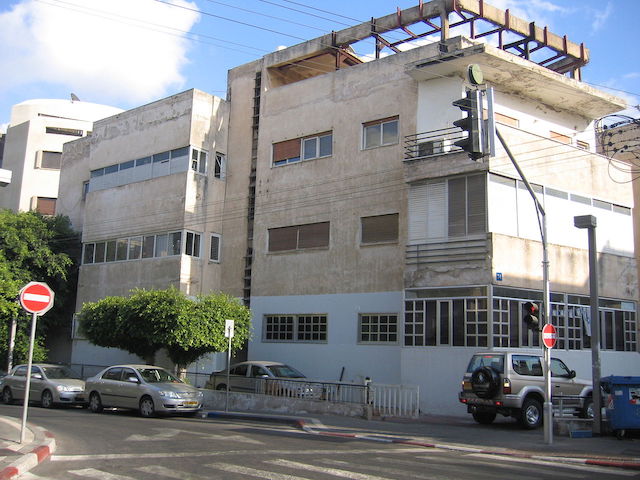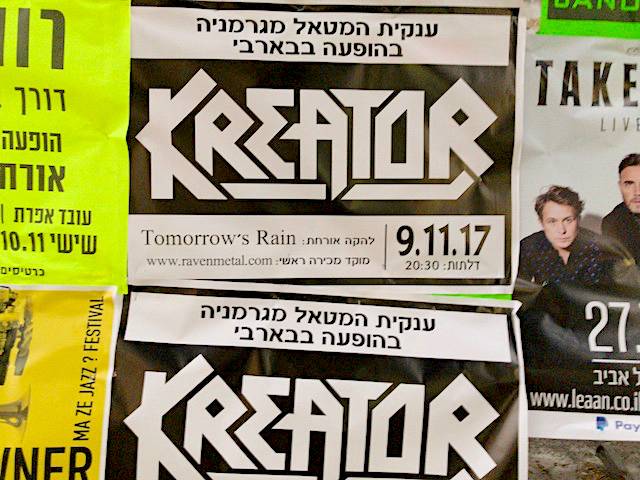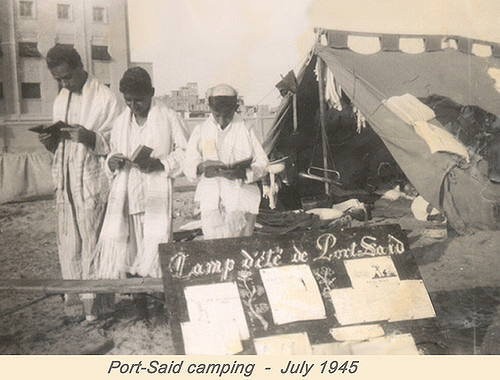When we moved to No. 14 Nahmani Street, our tenants were a gentleman of the distinguished Sephardic Chelouche family and his adored French wife Paulette. She was, of course, attractive, always carefully made up and dressed. Her face brightened up with a big smile and a wink whenever she saw me playing in the garden, as she looked out of her bedroom window.
When Marco, her husband, was away she spent a great deal of time in front of her mirror, preparing to meet him when he returns. Pictures of beauties of the twenties always remind me of Paulette.
Marco was equally particular about his toilette, as became a gentleman of his class. He dressed in what must have been, and could not have been otherwise, an immaculate, white linen custom-made suit. He wore the flat-topped hardened straw hat with a black silk brim à la mode de Maurice Chevalier.
He had a black moustache, smoked a cigar and used a walking stick. Like all celebrities of the day, Marco and his wife Paulette could be seen at the right times in the grand café restaurant by the sea, the now extinct Casino. Young and small as I was, and about as tall as a Casino table, my parents took me there sometimes of a Saturday morning.
Mother, who was a great mimic and life of her Saturday afternoon tea parties, could entertain her guests with the impersonation of a young man, trying to persuade his girl friend to come to the Casino where everybody spoke French.
Marco’s happiness was short-lived. One morning, when Paulette lay sunbathing on the beach she was stung by a venomous insect and died of blood poisoning. It was a day of mourning in our neighbourhood. All of Nahmani Street came to the funeral. I can still hear the thud of Marco throwing himself weeping on the coffin.
Marco no longer wished to live where he was once happy, nor did he ever remarry.
New tenants came. Hailing from the Netherlands, the Vroemens could not have been more different from their predecessors in character or culture. They were, however, equally well to do. Mrs. Vroemen was, as I remember, a rather charming, neither slender, nor very beautiful lady. Mr. Vroemen, as far as I can recall, was not very handsome either. He was, nevertheless, a fine gentleman, tall, smartly dressed and kind to children.
The Vroemens had one child, a small baby boy, with a head of curly fair hair, a detail I never fail to remember, and he was jealous of Peter, my doll. I can still remember the attachment, the love I had for that doll. I was not, at that young age, aware that it was indeed a very special doll, that it was handmade by the celebrated Käte Kruse. I loved it and never parted with it. I even had my picture taken holding it. The photograph remains in perfect condition in my family album. I must have called it Peter after the son of my parents’ life-long friends, later the object of my adolescent infatuation.
Little Vroemen wanted to play with my doll. And so little Vroemen borrowed it. And destroyed it. Love sometimes ends in tragedy.
The apartment on the second floor underwent a complete transformation. Again the place was tastefully decorated. The difference was in style.
Mother must have had her eye on two pale pink and pale grey gold-leaf framed engravings. One bore the inscription Le Concert and the other, Le bal paré – an evening dress ball, by the distinguished 18th century engraver, Augustin de St.Aubin.. Though not originals, they were nevertheless impressive. One fine day I saw mother busily hanging the engravings on our dining room wall.
Father often talked to me about light and shade, about the Rococo style of art and decoration, the minuet and the quadrille. All inspired by the St. Aubin engravings, which mother bought from our upstairs tenants.
We had a neighbour in the house next door, who got very drunk one afternoon. They were quite a large family. Uncles, aunts, brothers, sisters. The living room window of their second floor flat was always open, looking onto our garden, as well as a Vroemen window. Among the many members of the family was a flirtatious young woman. She could be seen almost daily talking to Mr. Vroemen whose eye she must have caught as he looked out of his bedroom window. This went on for some time. Scandal ensued and our upstairs flat was again available.
David and Mary Freund had one daughter, Hannah. The Freunds were neither glamorous like the Chelouches, nor did Mr. Freund seem likely to become involved with a sexy neighbour. Mother got on very well indeed with Mary Freund. Her daughter Hannah and I became friends. The Freunds attended Mother’s Saturday afternoon tea parties and often came down for a game of bridge.
I doubt that neither Mr. Freund nor father had much choice in the matter. Like it or not, they formed a foursome. I remember poor father’s lack of enthusiasm. He was, furthermore, a pretty poor bridge player. I always felt sorry for him sitting there, ill at ease, with those cards in his hand. When mother no longer wanted to live with father under the same roof, he consoled himself with the thought that he would no longer have to play bridge.
We children used to make fun of our parents and their bridge talk. The game was usually conducted in German. “Danke Frau Doktor” and bitte Herr Doktor kept ringing in my ears long after Nahmani Street 14 was torn down.
Photograph courtesy of Wikimedia. Published under a Creative Commons license.





